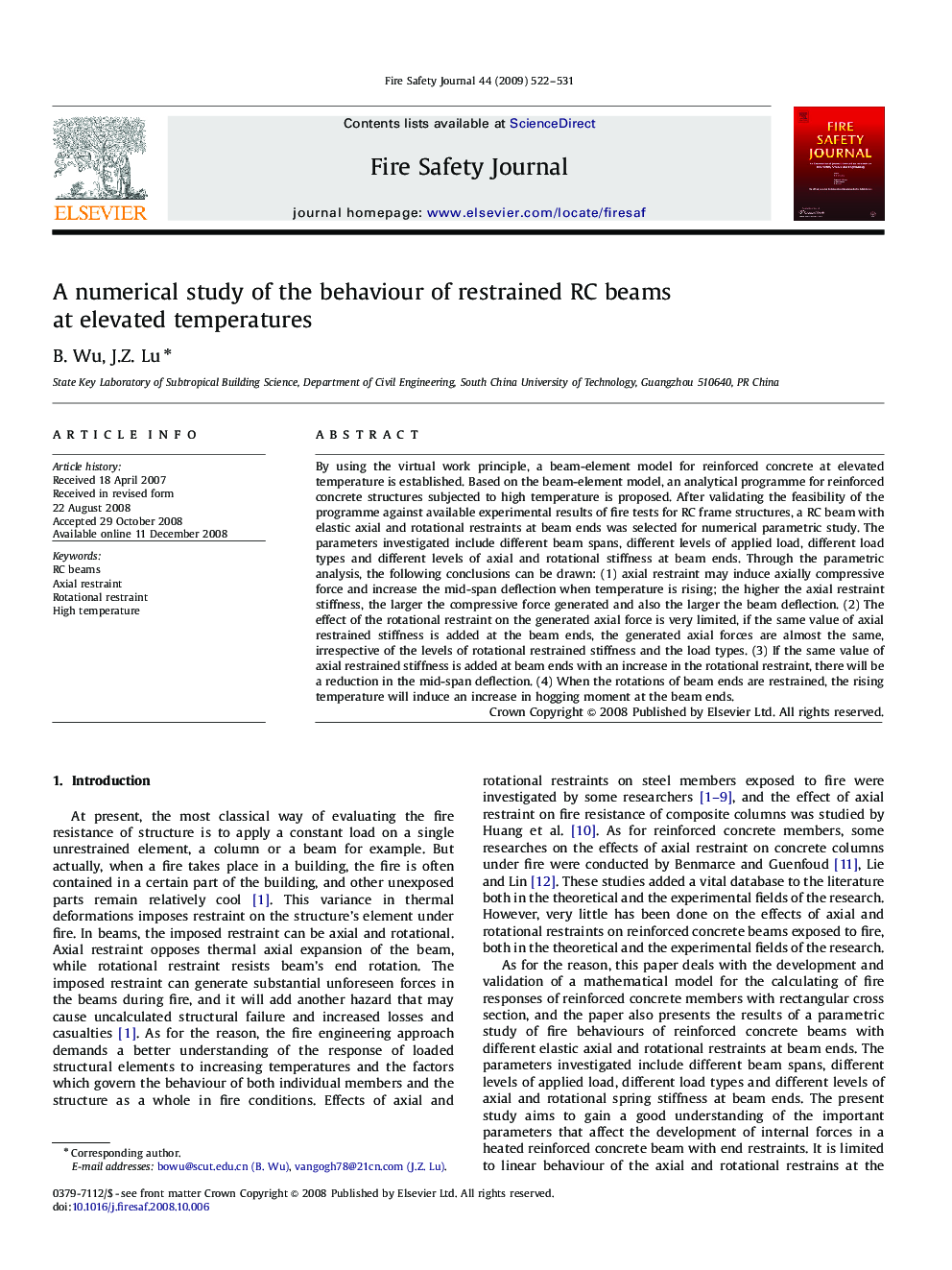| Article ID | Journal | Published Year | Pages | File Type |
|---|---|---|---|---|
| 270434 | Fire Safety Journal | 2009 | 10 Pages |
By using the virtual work principle, a beam-element model for reinforced concrete at elevated temperature is established. Based on the beam-element model, an analytical programme for reinforced concrete structures subjected to high temperature is proposed. After validating the feasibility of the programme against available experimental results of fire tests for RC frame structures, a RC beam with elastic axial and rotational restraints at beam ends was selected for numerical parametric study. The parameters investigated include different beam spans, different levels of applied load, different load types and different levels of axial and rotational stiffness at beam ends. Through the parametric analysis, the following conclusions can be drawn: (1) axial restraint may induce axially compressive force and increase the mid-span deflection when temperature is rising; the higher the axial restraint stiffness, the larger the compressive force generated and also the larger the beam deflection. (2) The effect of the rotational restraint on the generated axial force is very limited, if the same value of axial restrained stiffness is added at the beam ends, the generated axial forces are almost the same, irrespective of the levels of rotational restrained stiffness and the load types. (3) If the same value of axial restrained stiffness is added at beam ends with an increase in the rotational restraint, there will be a reduction in the mid-span deflection. (4) When the rotations of beam ends are restrained, the rising temperature will induce an increase in hogging moment at the beam ends.
